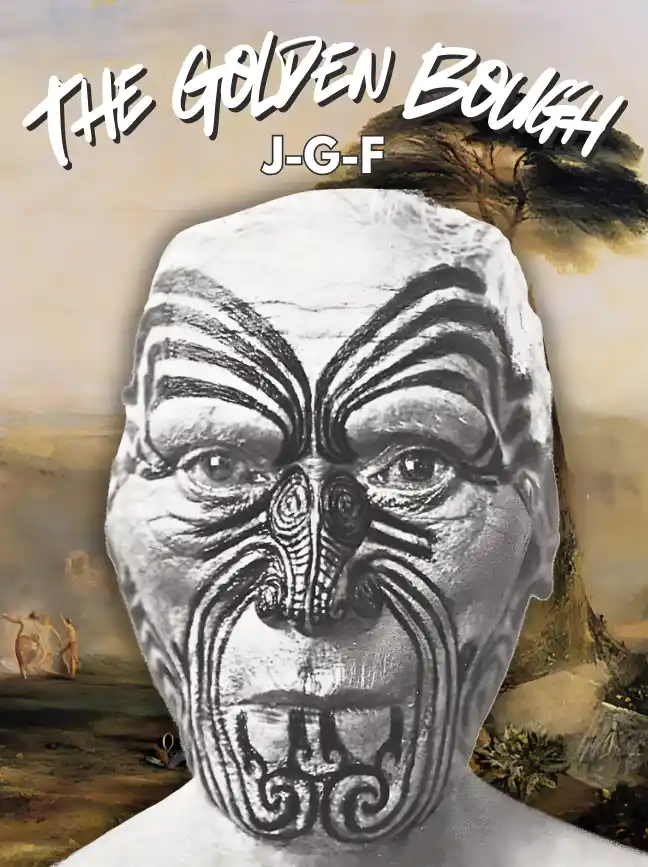CHAPTER 14
MOTHER-KIN AND MOTHER GODDESSES
WE have now concluded our inquiry into the nature and worship of the three Oriental deities Adonis, Attis, and Osiris. The substantial similarity of their mythical character justifies us in treating of them together. All three apparently embodied the powers of fertility in general and of vegetation in particular. All three were believed to have died and risen again from the dead; and the divine death and resurrection of all three were dramatically represented at annual festivals, which their worshippers celebrated with alternate transports of sorrow and joy, of weeping and exultation. The natural phenomena thus mythically conceived and mythically represented were the great changes of the seasons, especially the most striking and impressive of all, the decay and revival of vegetation; and the intention of the sacred dramas was to refresh and strengthen, by sympathetic magic, the failing energies of nature, in order that the trees should bear fruit, that the corn should ripen, that men and animals should reproduce their kinds.
Essential similarity of Adonis, Attis, and Osiris.
But the three gods did not stand by themselves. The mythical personification of nature, of which all three were in at least one aspect the products, required that each of them should be coupled with a goddess, and in each case it appears that originally the goddess was a more powerful and important personage than the god. At all events it is always the god rather than the goddess who comes to a sad end, and whose death is annually mourned. Thus, whereas Osiris was slain by Typhon, his divine spouse Isis survived and brought him to life again. This feature of the myth seems to indicate that in the beginning Isis was, what Astarte and Cybele always continued to be, the stronger divinity of the pair. Now the superiority thus assigned to the goddess over the god is most naturally explained as the result of a social system in which maternity counted for more than paternity, descent being traced and property handed down through women rather than
through men. At all events this explanation cannot be deemed intrinsically improbable if we can show that the supposed cause has produced the very same effect among existing peoples, about whose institutions we possess accurate information. This I will now endeavour to do.
The superiority of the goddesses associated with Adonis, Attis,
and Osiris points to a system of mother-kin.
The social system which traces descent and transmits property through the mother alone may be called mother-kin,* while the converse system which traces descent and transmits property through the father alone may be called father-kin. A good example of the influence which mother-kin may exert on religion is furnished by the Khasis of Assam. Like the ancient Egyptians and the Semites of Syria and Mesopotamia, the Khasis live in settled villages and maintain themselves chiefly by the cultivation of the ground; yet ‘their social organization presents one of the most perfect examples still surviving of matriarchal institutions, carried out with a logic and thoroughness which, to those accustomed to regard the status and authority of the father as the foundation of society, are exceedingly remarkable. Not only is the mother the head and source, and only bond of union, of the family: in the most primitive part of the hills, the Synteng country, she is the only owner of real property, and through her alone is inheritance transmitted. The father has no kinship with his children, who belong to their mother’s clan; what he earns goes to his own matriarchal stock, and at his death his bones are deposited in the cromlech of his mother’s kin. In Jowai he neither lives nor eats in his wife’s house, but visits it only after dark. In the veneration of ancestors, which is the foundation of the tribal piety, the primal ancestress (Ka lāwbei) and her brother are the only persons regarded. The flat memorial stones set up to perpetuate the memory of the dead are called after the woman who represents the clan (māw kynthei), and the standing stones ranged behind them are dedicated to the male kinsmen on the mother’s side. In harmony with this scheme of ancestor worship, the other spirits to whom propitiation is offered are mainly female, though here male personages also figure. The powers of sickness and death are all female, and these are those most frequently worshipped. The two protectors of the household are goddesses,
though with them is also revered the first father of the clan, U Thāwlang.
Priestesses assist at all sacrifices, and the male officiants are only their deputies; in one important state, Khyrim, the High Priestess and actual head of the State is a woman, who combines in her person sacerdotal and regal functions.’*
Mother-kin and father-kin.
The Khasis of Assam have mother-kin, and among them
goddesses predominate over gods and priestesses over priests.
Another instance of the same cause producing the same effect may be drawn from the institutions of the Pelew Islanders,* which have been described by an accurate observer long resident in the islands. These people, who form a branch of the Micronesian stock, are divided into a series of exogamous families or clans with descent in the female line, so that, as usually happens under such a system, a man’s heirs are not his own children but the children of his sister or of his maternal aunt. Every family or clan traces its descent from a woman, the common mother of the whole kin, and accordingly the members of the clan worship a goddess, not a god.
These families or clans, with female descent and a worship of goddesses rather than of gods, are grouped together in villages, each village comprising about a score of clans and forming with its lands a petty independent state. Every such village-state has its special deity or deities, generally a god and a goddess. But these political deities of the villages are said to be directly derived from the domestic deities of the families or clans, from which it seems to follow that among these people gods are historically later than goddesses and have been developed out of them. The late origin of the gods as compared with the goddesses is further indicated by the nature of their names.
Again, the Pelew Islanders have mother-kin, and the deities of
their clans are all goddesses.
This preference for goddesses over gods in the clans of the Pelew Islanders has been explained, no doubt rightly, by the high importance of women in the social system of the people. For the existence of the clan
depends entirely on the life of the women, not at all upon the life of the men. If the women survive, it is no matter though every man of the clan should perish; for the women will, as usual, marry men of another clan, and their offspring will inherit their mother’s clan, thereby prolonging its existence. Whereas if the women of the clan all die out, the clan necessarily becomes extinct, even though every man of it should survive; for the men must, as usual, marry women of another clan, and their offspring will inherit their mothers’ clan, not the clan of their fathers, which accordingly, with the death of the fathers, is wiped out from the community.
This preference for goddesses is to be explained by the
importance of women in the social system of the Pelew
Islanders.
Thus the present, or at least the recent, state of society and religion in the Pelew Islands presents some interesting parallels to the social and religious condition of Western Asia and Egypt in early days, if the conclusions reached in this work are correct. In both regions we see a society based on mother-kin developing a religion in which goddesses of the clan originally occupied the foremost place, though in later times, as the clans coalesced into states, the old goddesses have been rivalled and to some extent supplanted by the new male gods of the enlarged pantheon. But in the religion of the Pelew Islanders, as in that of the Khasis and the ancient Egyptians, the balance of power has never wholly shifted from the female to the male line, because society has never passed from mother-kin to father-kin. And in the Pelew Islands as in the ancient East we see the tide of political power running strongly in the direction of theocracy, the people resigning the conduct of affairs into the hands of men who claimed to rule them in the name of the gods. In the Pelew Islands such men might have developed into divine kings like those of Babylon and Egypt, if the natural course of evolution had not been cut short by the intervention of Europe.
Parallel between the Pelew Islands of to-day and the religious
and social state of Western Asia and Egypt in antiquity.
The evidence of the Khasis and the Pelew Islanders, two peoples very remote and very different from each other, suffices to prove that the influence which mother-kin may exert on religion is real and deep. But in order to dissipate misapprehensions, which appear to be rife on this subject, it may be well to remind or inform the reader that the ancient and widespread custom of tracing descent and inheriting property through the mother alone does not by any means imply that the government of the tribes which observe the custom is in the hands of women; in short, it should always be borne in mind that mother-kin does not mean mother-rule. On the contrary, the practice of mother-kin prevails most extensively amongst the lowest savages, with whom woman, instead of being the ruler of man, is always his drudge and often little better than his slave. Indeed, so far is the system from implying any social superiority of women that it probably took its rise from what we should regard as their deepest degradation, to wit, from a state of society in which the relations of the sexes were so loose and vague that children could not be fathered on any particular man.
Mother-kin does not imply that the government is in the hands
of women.
When we pass from the purely savage state to that higher plane of culture in which the accumulation of property, and especially of landed property, has become a powerful instrument of social and political influence, we naturally find that wherever the ancient preference for the female line of descent has been retained, it tends to increase the importance and enhance the dignity of woman; and her aggrandizement is most marked in princely families, where she either herself holds royal authority as well as private property, or at least transmits them both to her consort or her children. But this social advance of women has never been carried so far as to place men as a whole in a position of political subordination to them.
Even where the system of mother-kin in regard to descent and property has prevailed most fully, the actual government has generally, if not invariably, remained in the hands of men. Exceptions have no doubt occurred; women have occasionally arisen who by sheer force of character have swayed for a time the destinies of their people. But such exceptions are rare and their effects transitory; they do not affect the truth of the general rule that human
society has been governed in the past and, human nature remaining the same, is likely to be governed in the future, mainly by masculine force and masculine intelligence.
The inheritance of property, especially of landed property,
through the mother certainly tends to raise the social
importance of women, but this tendency is never carried so far
as to subordinate men politically to women.
To this rule the Khasis, with their elaborate system of mother-kin, form no exception. For among them, while landed property is both transmitted through women and held by women alone, political power is transmitted indeed through women, but is held by men; in other words, the Khasi tribes are, with a single exception, governed by kings, not by queens. And even in the one tribe, which is nominally ruled by women, the real power is delegated by the reigning queen or High Priestess to her son, her nephew, or a more distant male relation. In all the other tribes the kingship may be held by a woman only on the failure of all male heirs in the female line. So far is mother-kin from implying mother-rule. A Khasi king inherits power in right of his mother, but he exercises it in his own. Similarly the Pelew Islanders, in spite of their system of mother-kin, are governed by chiefs, not by chieftainesses. It is true that there are chieftainesses, and that they indirectly exercise much influence; but their direct authority is limited to the affairs of women, especially to the administration of the women’s clubs or associations, which answer to the clubs or associations of the men. And to take another example, the Melanesians, like the Khasis and the Pelew Islanders, have the system of mother-kin, being similarly divided into exogamous clans with descent in the female line; ‘but it must be understood that the mother is in no way the head of the family. The house of the family is the father’s, the garden is his, the rule and government are his.’
Thus while the Khasis and Pelew Islanders have mother-kin,
they are governed by men, not by women.
We may safely assume that the practice has been the same among all the many peoples who have retained the ancient system of mother-kin under a
monarchical constitution. In Africa, for example, the chieftainship or kingship often descends in the female line, but it is men, not women, who inherit it. The theory of a gynaecocracy is in truth a dream of visionaries and pedants. And equally chimerical is the idea that the predominance of goddesses under a system of mother-kin like that of the Khasis is a creation of the female mind. If women ever created gods, they would be more likely to give them masculine than feminine features. In point of fact the great religious ideals which have permanently impressed themselves on the world seem always to have been a product of the male imagination. Men make gods and women worship them.* The combination of ancestor-worship with mother-kin furnishes a simple and sufficient explanation of the superiority of goddesses over gods in a state of society where these conditions prevail.
Men naturally assign the first place in their devotions to the ancestress from whom they trace their descent.
The theory of a gynaecocracy and of the predominance of the
female imagination in religion is an idle dream.






